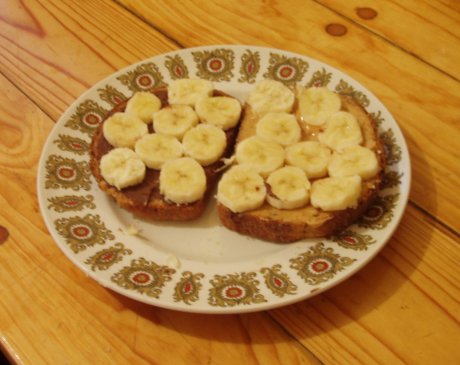This is kind of a followup to my quick Peanut butter, banana, and Nutella sandwich post. Those who know me well would know that I like to experiment with food. Not in a creepy smother-spagetti-over-my-body-like-that-guy-on-Jerry-Springer sort of way though; I like trying to come up with new recipes. It can be pretty hit or miss… with a lot of misses.
Here’s a quick recap of a few prior experiments. I’m sure there are more, but I can’t think of them at the moment.
Deep-fried jok balls
Day-old jok (Thai congee, savoury rice porridge) that has been kept in the fridge is incredibly gelatinous. So much so that I figured I could roll it into balls, coat these balls with flour, and deep fry them… and that’s what I did. It turned out very well (taste-wise, probably not health-wise).
When eating jok I usually add soy sauce, deep-fried red onion, and vinegar chilli. This makes a great dipping sauce for jok balls! Conclusion: Victory!
Frozen spider
Probably more often called a float, a spider consists of a soft-drink (normally Coke) and a scoop of vanilla ice-cream. When mixed together, the result is a sweet, bubbly, opaque, milky masterpiece of dessert beverageness. Like many other things, I wondered if it could be improved by freezing. Apparantly not.
The ice-cream seems to suck all the flavour out of the soft-drink and leaves a layer of water which then becomes ice. So you end up with: ice-cream, ice, super-sweet pockets of syrup. Mixing the drink furiously before freezing helps a bit, but I don’t really like the well-mixed spider. Conclusion: Failure…
Spaghetti pie
Everyone know that spaghetti jaffles (toasted sandwiches) are the bomb. Jaffles are really like little pies with bread as pastry. So, what about a spaghetti pie? Short answer: it’s great! Conclusion: Victory!
Update: Clearly the use of the word “cuisine” in the post title is tenuous at best!

